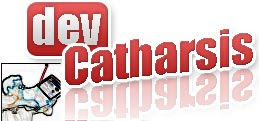About the Entity Framework delay, Mike Pizzo, Architect on Data Programmability, says:
Follow the post here for the expected roadmap.Yes, it turns out we do. Microsoft envisions an Entity Data Platform that enables customers to define a common Entity Data Model across data services and applications. The Entity Data Platform is a multi-release vision, with future versions of reporting tools, replication, data definition, security, etc. all being built around a common Entity Data Model.
Within the .NET Framework, the ADO.NET Entity Framework is integral to this vision. The ADO.NET Entity Framework builds on our mutual investment in ADO.NET by enabling applications to write to a conceptual data model with strong notions of type, inheritance, and relationships. Through the use of “Client Views”, this conceptual model can be flexibly mapped to existing relational schemas, enabling the creation of new business structures when the underlying database schema cannot be changed and providing a level of indirection that helps isolate applications from naming as well as structural changes of the storage schema (for example, changes in the degree of storage schema normalization). The ability to work with a conceptual model greatly simplifies forms design and web service development where the underlying data store represents the model in a complex way.
Client Views are implemented within a new ADO.NET Data Provider called the Entity Client which supports an extended SQL grammar called Entity SQL (“ESQL”). ESQL provides a common query language across providers by extending the existing SQL language with constructs to work with strong notions of type, inheritance, and relationships from the Entity Data Model. By exposing the conceptual model through traditional ADO.NET Data Provider APIs (Connections, Commands, and Data Readers), existing ADO.NET programmers can immediately benefit from the conceptual model, common SQL language, and flexible mapping of the ADO.NET Entity Framework.
The ADO.NET Entity Framework also supports Object Services for building typed queries and returning, manipulating, and updating results as Business Objects. These Business Objects can be queried using ESQL, or through a new language innovation called LINQ.


No comments:
Post a Comment